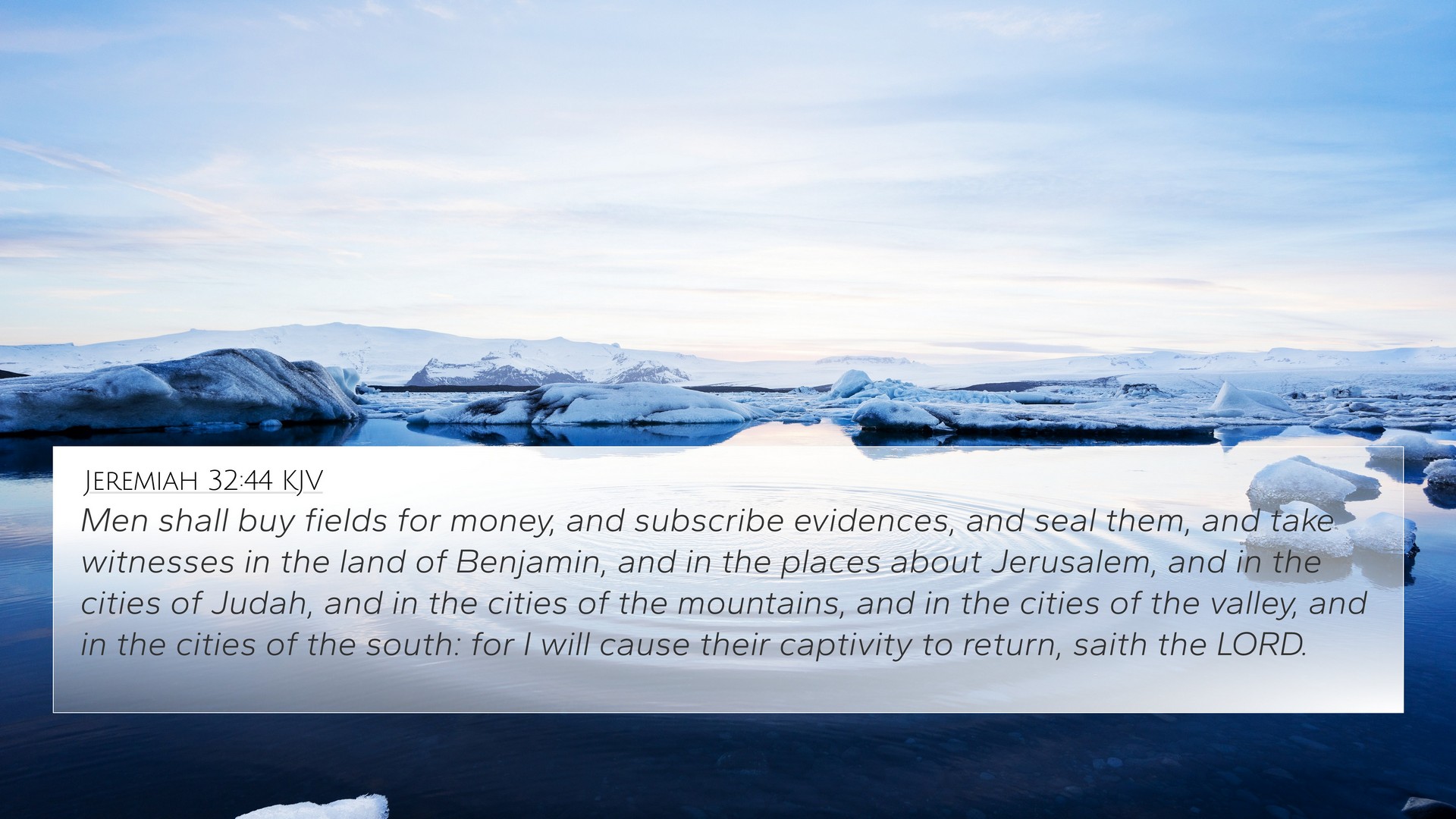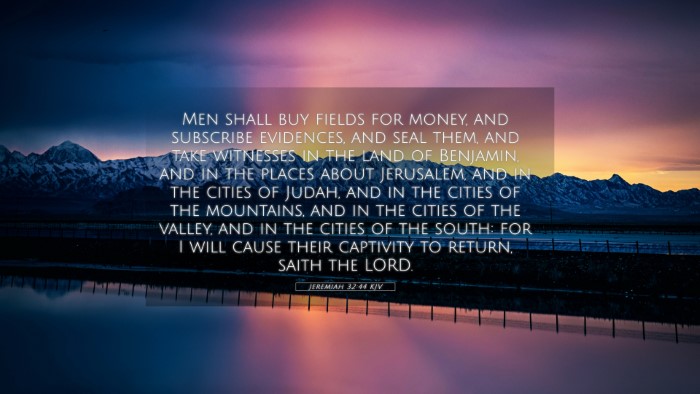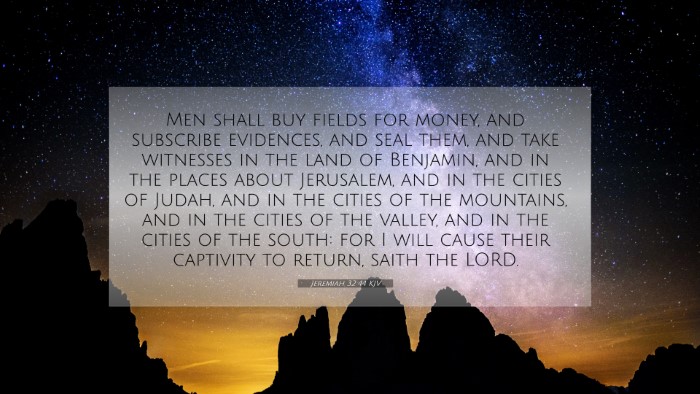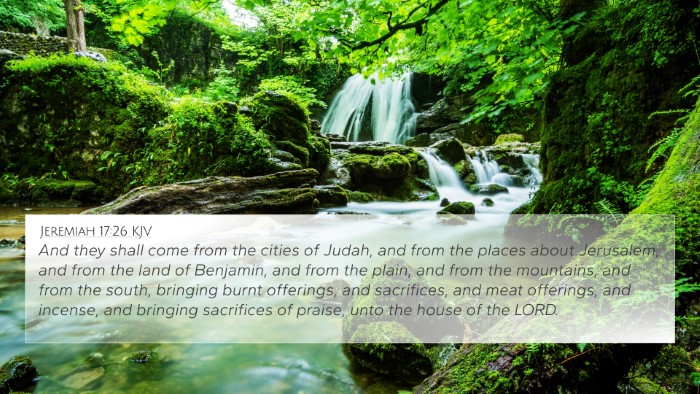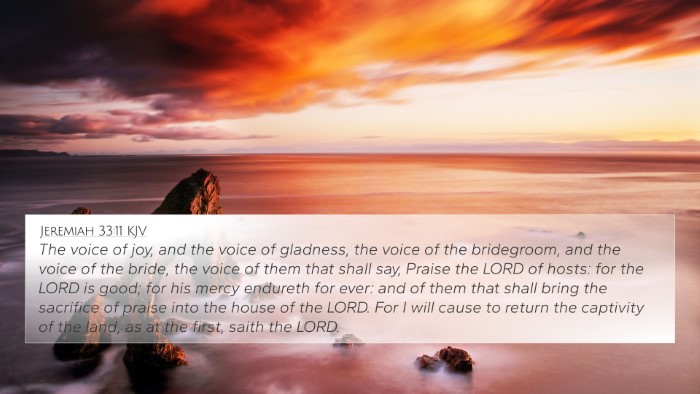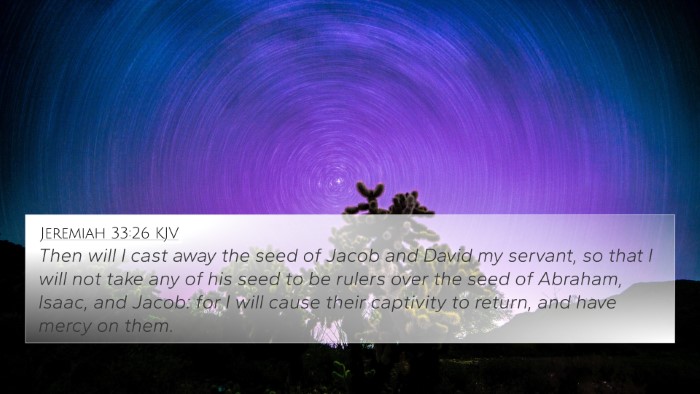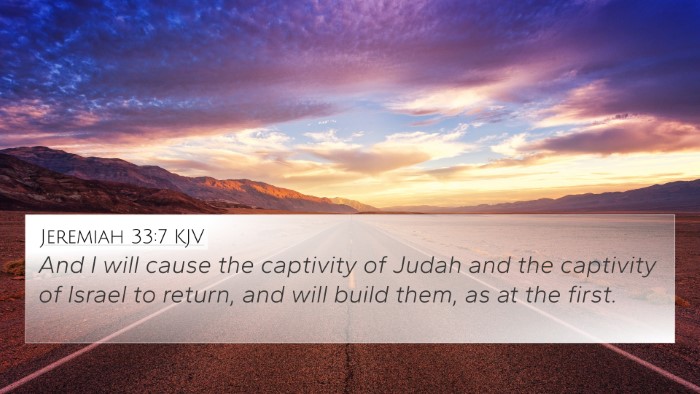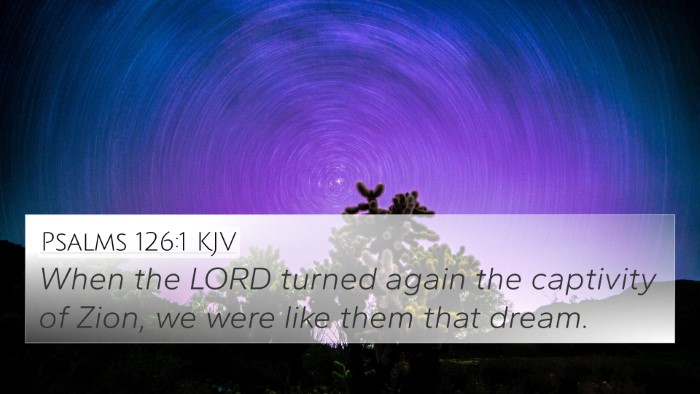Understanding Jeremiah 32:44
Jeremiah 32:44 states, "And fields shall be bought in this land, whereof ye say, It is desolate without man or beast; it is given into the hand of the Chaldeans." This verse reflects profound themes of hope, restoration, and the faithfulness of God’s promises amid adversity. The context of this passage is rooted in the poignant history of Israel during the Babylonian siege when the land appeared hopeless and desolate.
Historical Context
Jeremiah's prophecy comes during a tumultuous time in Israelite history. The Babylonian exile was imminent, and many were questioning the future of their homeland. This verse, however, serves as a reassurance that God would restore not just the people but also the land itself.
Insights from Public Domain Commentaries
-
Matthew Henry:
Henry emphasizes the divine assurance that, despite the present circumstances of desolation, the land will again be inhabited and prosperous. He highlights the importance of faith in God’s promises, which transcend the immediate trials faced by the Israelites.
-
Albert Barnes:
Barnes points out the significance of property transactions as a testimony of hope for future restoration. The act of buying fields in a seemingly lost cause illustrates a profound faith in God’s covenant promise to restore Israel.
-
Adam Clarke:
Clarke provides a vivid depiction of the social and economic implications of the prophecy. He remarks on the absurdity perceived by the people in claiming inheritance in a land viewed as utterly defeated. Yet, he urges readers to focus on the sovereignty of God over historical events.
Thematic Connections
This verse connects deeply with several biblical themes such as promise, hope, and restitution. It serves as a pivot around which many other biblical passages speak to the enduring quality of God’s word and promises.
Bible Verse Cross-References
- Jeremiah 29:10-14: A promise of restoration and a future filled with hope.
- Isaiah 54:10: Assurance of God's unfailing love even when natural circumstances seem bleak.
- Ezra 1:1-4: The decree of Cyrus allowing the return and rebuilding of Jerusalem.
- Ezekiel 36:10-11: Prophecy denoting the return of the people and blessings upon the desolate places.
- Romans 8:28: The assurance that all things work together for good for those who love God and are called according to His purpose.
- Psalms 126:1-3: A song of restoration that echoes the sentiment of joy in renewed fortunes.
- Amo 9:14: A promise of restoration to the fortunes of Israel.
Integrating Cross-References for Deeper Understanding
In exploring how Jeremiah 32:44 relates to these references, one can see a thematic thread of restoration woven throughout the scriptures. Just as Jeremiah foresaw restoration, other passages reinforce that theme, highlighting God’s unchanging nature and His commitment to His covenant people.
Tools for Bible Cross-Referencing
- Bible concordance
- Bible cross-reference guide
- Cross-reference Bible study resources
- Bible reference resources
- Comprehensive Bible cross-reference materials
Application for Today
The essence of Jeremiah 32:44 resonates with believers today. It serves as a reminder that irrespective of current troubles, God’s promises endure. This can be especially encouraging during times of personal desolation or crisis. A thorough study using cross-referenced scripture allows believers to develop a more nuanced understanding of their faith and God’s continuous interaction throughout history.
Conclusion
Jeremiah 32:44, placed within the larger narrative of the Scriptures, stands as a beacon of hope. The verse urges readers to trust in God's unfailing promises and assures that the past does not dictate the future. Through incorporating cross-referencing biblical texts, one gains fuller insight into God’s character and His plan for humanity. This academic exercise not only enriches biblical understanding but also strengthens faith and encouragement in God's ultimate plan for restoration.
